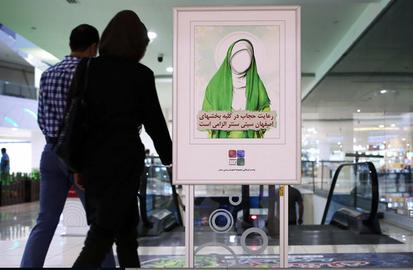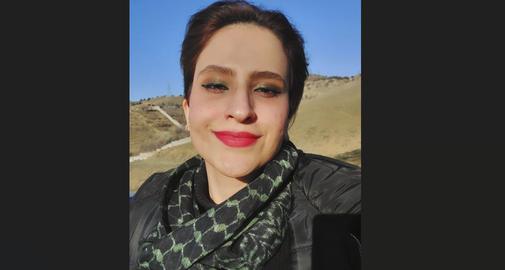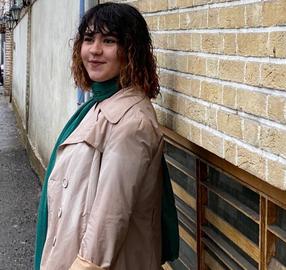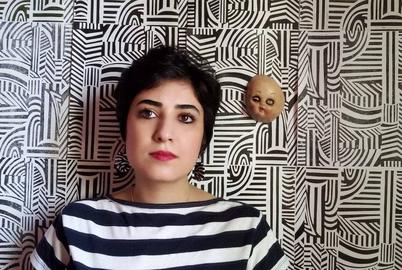
Reports from Iran say officials have arrested several people in connection with the recent acid attacks against women in the city of Isfahan.
Morteza Mirbagheri, a high-ranking official in the Interior Ministry reported that three or four individuals were arrested in connection with acid attacks in Isfahan. However, Gholamreza Mohseni Ejei, spokesperson for the judiciary, commented that the perpetrators “must be identified, arrested and severely punished,” suggesting that any arrests did not necessarily constitute an end to investigations. Beyond this, details vary, and there have been contradictory reports from officials.
Officials have also criticized the media, urging it not to draw any parallels between what has been happening in Isfahan and Islamic rituals. Mohammadreza Naghdi, the commander of the Basij, warned the media to stay vigilant against corrupt people, particularly those enamored with the West, who would take any opportunity to attack Islamic values. According to Naghdi, there is good reason to believe there is a link between the perpetrators of these attacks and Western intelligence services.
As reports emerged that a number of women had been attacked by motorcyclists who threw acid in their faces, there was considerable debate, both within Iran and in the international media, about the motives for the attacks. Most reports have linked attacks with extremist elements in Isfahan, thought to be targeting women who fail to wear their hejabs in line with Islamic tradition, or at least their interpretation of it.
But according to Ahmad Salek, a Member of Parliament from Isfahan, one of the victims was wearing chador, a full-body cloak. Unlike a burqa, the woman’s face is uncovered, though the rest of her body remans fully cloaked. He told IranWire that despite this observance of traditional Islamic dress, she was still targeted. Though it is assumed that the attacks have been connected to women’s dress, there has been no confirmation of this, and the motives of the perpetrators are not known.
In June 2014, parliament took steps to enact a law to support “Enjoining good and forbidding wrong,” essentially giving license for people to interfere with others’ behavior if it is seemed to contravene Islamic law. This led to a law being passed on October 19 that supported morality police.
Scholars of Islamic jurisprudence continue to debate what the Koran says about the promotion of virtue and prevention of vice, and how it should be implemented. Some segments of the political elite, and certainly security forces, in particular the Basij, a paramilitary force under the control of the Revolutionary Guards, adopt a hardline interpretation of this doctrine. This has led some to argue that acid attacks could teach women a lesson that they must observe rules around wearing the Islamic headscarf.
Government officials do not subscribe to this interpretation, and have dismissed claims that it has even been the subject of serious discussion. The leader of Friday Prayers in Isfahan, Ayatollah Seyyed Yousef Tabatabaeinejad publicly condemned the acid attacks in his city: “This act is against sharia, and you can never call it enjoining good,” he said. “No one can harm others in an attempt to support good and prevent wrong. Acid attacks are against sharia and forbidden.”
Online Conspiracies and Drastic Measures
The subject has generated wide-ranging debate online too. Commander Naghdi is not the only one to have identified links between the attacks and wider unrest in the region — particularly as it pertains to the dangers Iran might face. A person identifying himself as Ya Ali Madad on a social media site claimed the terrorist group Islamic State (IS) perpetrated the attacks, posting that IS was “using this plot to weaken Iran ... Both the acid attackers and IS want to defame Islam and Muslims.”
Another person going by the name of Amin posted comments on Iranian Students News Agency (ISNA) —which has carried reports since the attacks began — criticizing the lenient punishment meted out for previous acid attacks in Iran. “As long as the punishment for an acid attack is some sort of restitution, with two to five years’ imprisonment, no one will be deterred. If harsher punishments, such as execution and lashing, are imposed on this inhuman act, it might not happen in the future.”
But Shabkhiz, also posting on ISNA, argued that “the attackers are religious and believe this is the way to confront improper veiling. They have powerful backers,” making a clear reference to hardline officials. One anonymous commentator asked: “Why are those people who want to impose strict hejab rules silent?”
The overwhelming majority of the people commenting on ISNA called for Qisas, an Islamic term meaning “an eye for an eye”. For many, the perpetrators of these attacks deserve nothing less than to have acid thrown in their faces.
Whatever the reason, or the punishment, the attacks remain a mystery, with yesterday’s arrests doing little to alleviate people’s fear and anger, or confusion. The government might, as Commander Naghdi suggests, blame it on foreign agents, yet many people will blame religious zealots, and interpret official calls for “enjoining good and forbidding wrong” as the motive or justification. After all, the government cannot prevent individuals from responding to calls to action, interpreting them as they see fit. But, as contradictory reports from officials highlights, it is not known whether the perpetrators (or all of them) have actually been arrested.
If the government wants to stop acid attacks, it must investigate the motives of the perpetrators and get to the root of the problem. Those responsible for the crime must be punished, but they are just symptoms of a deep-rooted problem in some sections of society. As long as officials are unwilling to get to the bottom of events in Isfahan, the potential for similar attacks to take place in other parts of the country remains.
visit the accountability section
In this section of Iran Wire, you can contact the officials and launch your campaign for various problems
























comments